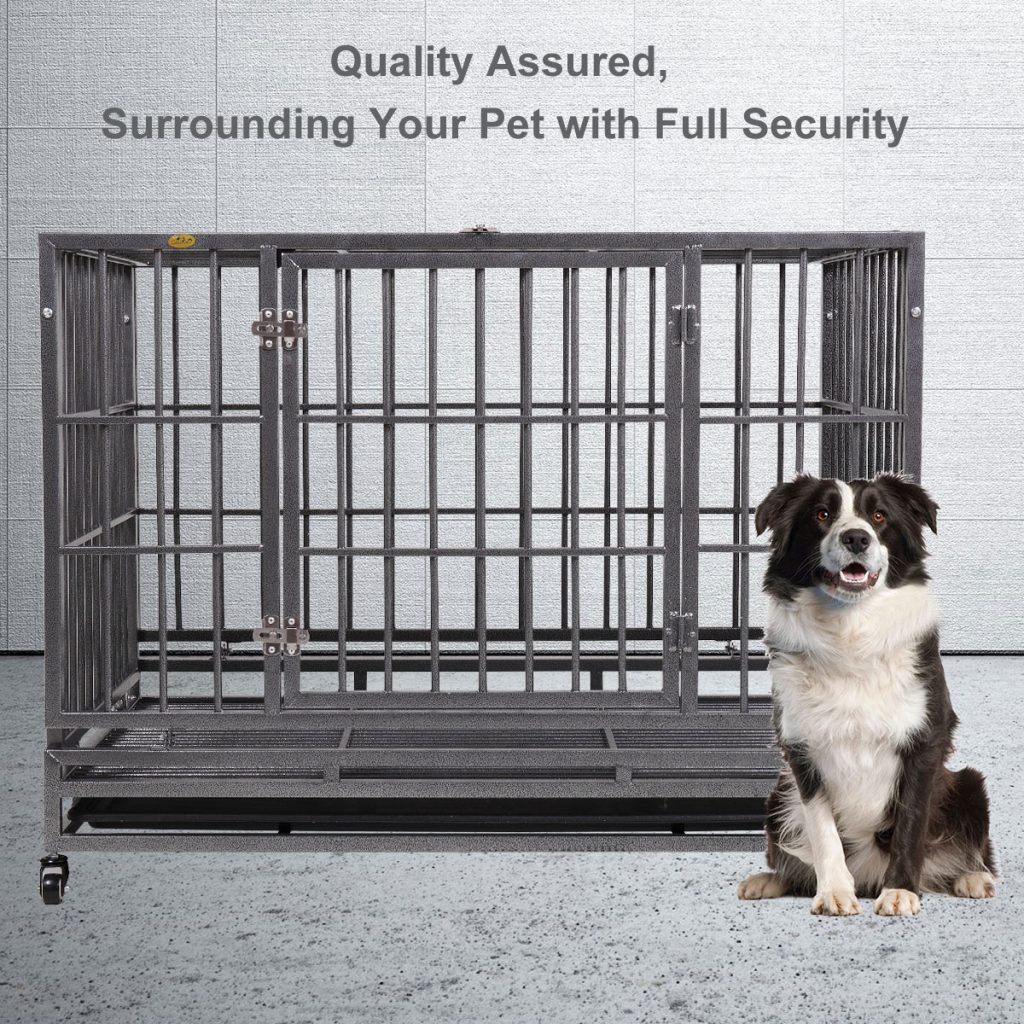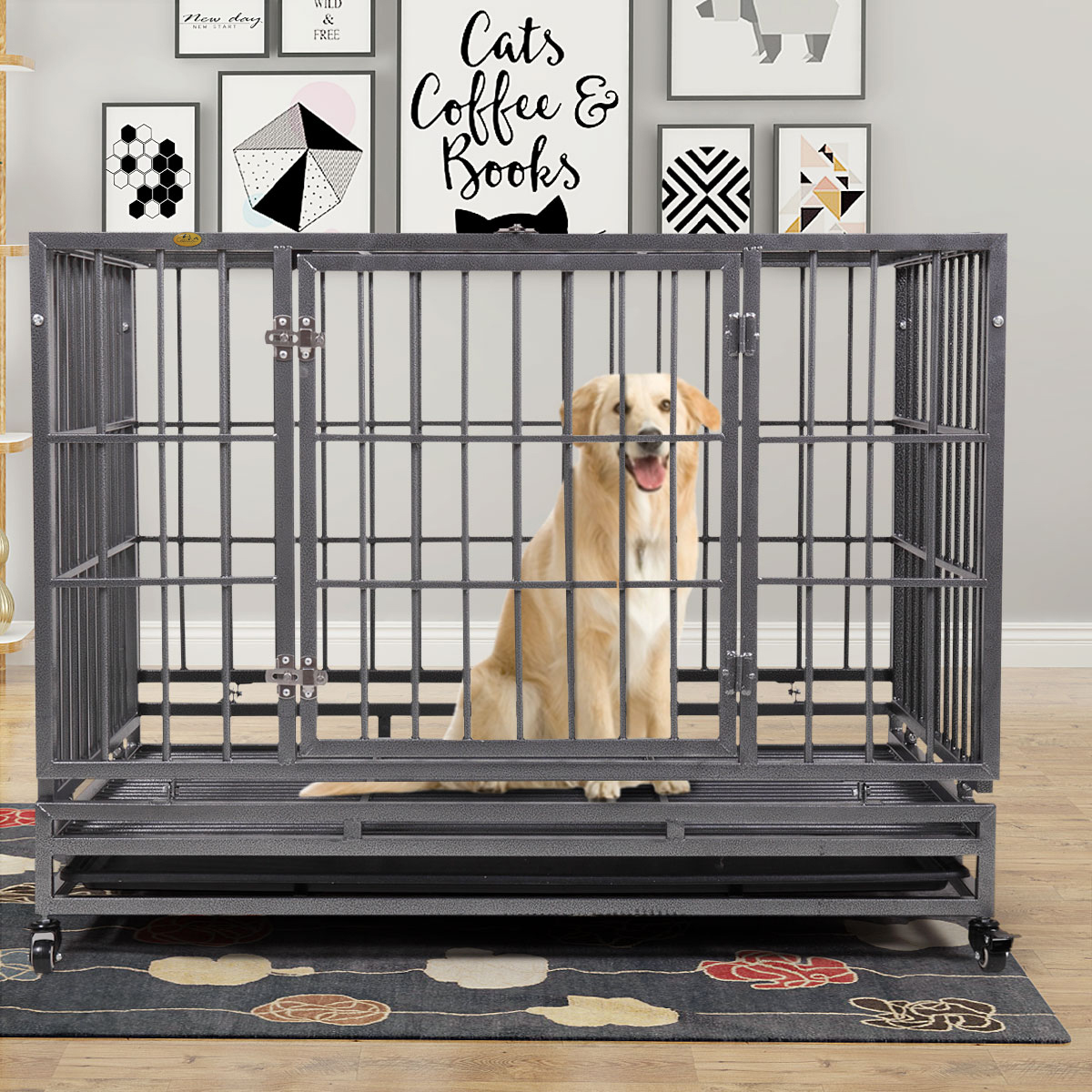A dog crate is an excellent solution if your puppy or dog is hyperactive, or if you have to leave your pet at home alone and they aren’t adequately house-trained. However, leaving your dog in their crate for an extended period of time might lead to behavioral issues. There is no alternative for play and practice. Leaving your dog in their cage for an extended period of time can diminish the crate’s efficacy as a training tool.
The Benefits Of A Dog Crate
A crate can help your dog feel safe, quiet, and at ease. Dogs, by nature, are exceedingly unlikely to pollute their sleeping place. As a result, crates can also aid with potty training your dog. If you have a dog who has frequent accidents in your home and is not readily house-trained, a crate will help you avoid this problem.
Crates are particularly useful for hyperactive dogs since they provide a simple way to settle them down. When most dogs are placed in a crate, they quickly quiet down and become much more responsive to your training.
Crate Time For Puppies
Puppies have a harder time holding their bladders than adult dogs, thus while crate training your puppy, you should err on the side of “too little” time in the crate. Opinions disagree on the exact amount of time, but according to the Human Society, puppies under six months old should not be placed in a crate for more than three to four hours.
Others have devised calculations such as “leave puppies in their crates by multiplying their age in months by 1.” (e.g. a 4-month-old puppy can stay in a crate for up to 5 hours).
When it comes down to it, you must get to know your puppy, observe their behavior, and gradually train them.

Crate Time For Adult Dogs
Most older dogs can stay in a crate for about half a day if they get enough of activity and go for walks when they come out. Many mature dogs can tolerate eight to ten hours in a crate while their owners are at work, but much longer can lead to behavioral issues. If you work long hours, consider hiring a dog walker to come once or twice a day to let your dog out of its crate and take it for a walk, or consider doggie daycare instead of crating them.
Risks Of Overusing Your Crate
It cannot be emphasized enough: when you abuse your dog’s crate, it reduces its training utility. For example, if your dog has an accident in their crate, they may have additional accidents elsewhere. This implies there are no places where you can leave your dog without risking an accident.
Furthermore, if you leave your dog in the crate for an extended period of time, they may begin to detest the crate. This implies it will be difficult to get them into it, they will not feel comfortable and tranquil when in it, and they may develop aggressiveness issues or, worse, health problems.
Crate Training Tips
To get the most out of your dog cage, put it in a spot where your dog enjoys spending time. Put a mouthful of cookies in your dog’s crate, or offer him a bone or other chew toy. Allow the door to remain open at initially to help them become acquainted to the crate. Then begin progressively shutting the door. Make certain that the crate is placed in an area where the temperature is comfortable, and most importantly, that it is the correct size for your dog. In the crate, a dog should be able to readily stand up, sit, lie on his side, and turn around.
Most importantly, never use the box as a form of punishment. If you decide to punish your dog by placing him in his cage, he may develop a dread of the crate.


